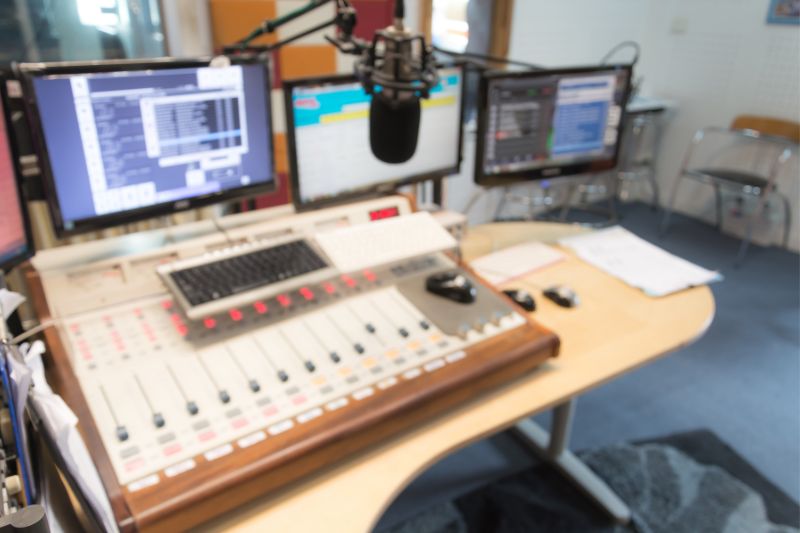No products in the cart.
Analytics and Insights: Using Data to Optimize Radio Station Programming

In the dynamic crossroads of contemporary media, where digital dimensions interlace seamlessly with the airwaves’ timeless allure, the domain of radio station programming is undergoing a profound evolution. Much like skilled composers crafting a symphony, radio stations endeavor to weave captivating narratives while synchronizing with the ever-evolving preferences of their audience. In this orchestration, data emerges as the conductor’s baton, directing a symphony of insights that unlocks the secret to enthralling listeners and elevating programming to unprecedented levels.
In this blog post, we embark on an illuminating journey where the convergence of technology and creativity fuels the art of radio programming. Here, we explore the harmonious dance between the science of analytics and the craft of content creation, delving into how the mastery of data-driven precision amplifies the symphony of radio station programming, captivating minds and hearts alike.
Understanding Analytics
Analytics, a backbone of informed decision-making, entails dissecting numerical data patterns or trends. It forms the crux of unraveling vast raw data, channeling it into coherent insights to guide business operators. Analytics finds its muse in radio hosting, empowering programmers to discern listener trends. Delving into dimensions like peak program hours and the preferences of distinct music genres’ fans, it becomes a compass steering broadcasters toward actionable directions. This reservoir of data unlocks the door to relevant insights about show engagement within various demographic segments. This compelling data vein offers a treasure trove of opportunities to elevate output quality, crafting script strategies and segment choices fine-tuned for these clusters.
Tools Used For Radio Analytics
In radio programming, a toolkit of analytics instruments empowers broadcasters to fine-tune their strategies. These tools include:
- Nielsen Audio Ratings: Revered as a yardstick, these ratings intricately trace audience behaviors across an array of platforms, painting a comprehensive picture of online and offline engagement. Often localized under monikers like Arbitron, these ratings become a compass guiding programming decisions.
- Ando Media: A savvy companion, Ando Media delves into streaming activity, providing intelligent insights and recommendations for optimizing streaming equipment. Its intricate monitoring helps refine streaming approaches for maximum impact.
- StreamS Guys: Catering to the granular nuances, StreamS Guys furnishes indispensable metrics for the tailored administration of streaming services. By offering insights into listenership numbers and geographic audience segmentation, it equips programmers with the precision to align content with distinct audience clusters.
Key Metrics Used For Radio Analytics
In the intricate landscape of radio analytics, a medley of metrics harmonizes with measurement tools to unveil nuanced insights. The choice of metrics hinges on the depth of analysis, allowing optimization strategies tailored to the essence of the data. Here are several pivotal metrics:
- a) Reach: The count of unique listeners engaging with a radio station during a week or month, spotlighting the station’s broad audience appeal.
- b) Time Spent Listening (TSL): Time Spent Listening tracks listener immersion by gauging their duration on a specific platform and their sustained interest in particular topics.
- c) Engagement: Measures the depth of listener-brand interaction via metrics like clicks, shares, reposts, and comments across social media and other communication channels, forging connections that echo a responsive audience.
How Programmers Use Analytics to Optimize Programming
In the intricate landscape of radio analytics, a harmonious interplay of diverse metrics converges seamlessly with precision measurement tools, culminating in the revelation of finely nuanced insights. The art of selecting these metrics becomes a strategic endeavor, its depth of analysis serving as the compass guiding the tailoring of optimization strategies, each uniquely aligned with the essence of the data. Here, we unveil several pivotal metrics:
- a) Reach: This metric unveils the count of unique listeners who engage with a radio station during a given week or month, casting a radiant spotlight on the station’s wide-reaching audience appeal.
- b) Time Spent Listening (TSL): A meticulous tracker of listener immersion, TSL measures the duration during which listeners remain captivated on a specific platform, offering insights into their sustained interest in particular topics.
- c) Engagement: This metric serves as a profound measure of the depth of listener-brand interaction. Through a constellation of metrics, including clicks, shares, reposts, and comments across the realms of social media and other communication channels, engagement forms the connective tissue that forges relationships akin to an intricately woven tapestry, echoing the vibrant resonance of a responsive and engaged audience.
Conclusion
Radio station programming stands as a pivotal cornerstone in our digital era, particularly for business owners entrenched within the global broadcasting realm. A steadfast march towards innovation, underpinned by the bedrock of analytics-driven solutions, catalyzes refining content creation. This strategic alignment not only hones the output’s quality but also magnetizes market trends, nurturing an unwavering community of followers while continually expanding the horizon of customer segments. This multitasking synergy further orchestrates a symphony of potent revenue streams, reinvesting its ingenious dividends into successive strategies. Through this dynamic interplay, a perpetual cycle of creative and educational evolution ensues, perpetually elevating the operational bottom line and catalyzing unprecedented profitability. This transformative voyage doesn’t merely endow industry growth with an upward trajectory; it also unfurls the wings of programmatic excellence to unprecedented heights, unfurling its transformative impact universally.















Leave a Reply